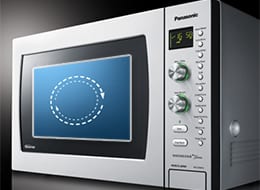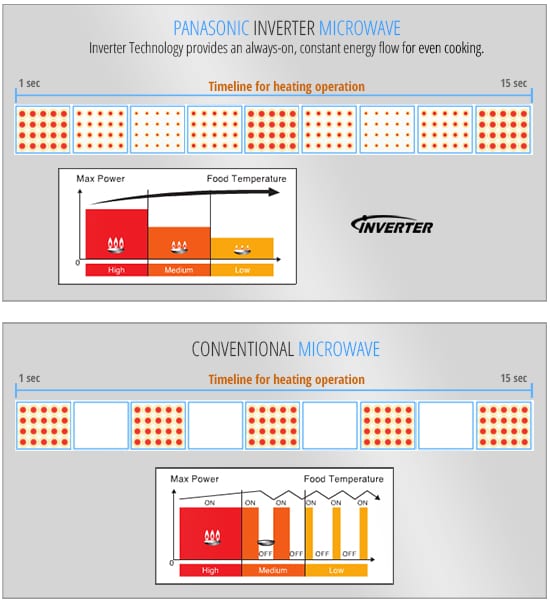 Ah, the microwave oven. It’s like a magic box, perched there on the counter and ready to do our bidding at the touch of a button. Whether it is relegated to popping popcorn and heating up frozen dinners, or is the star player in a slew of quick and easy recipes, the microwave has been saving everyone’s time and energy since it first debuted after World War II. It’s pretty easy to take your microwave for granted but have you ever wondered what happens inside that magic box? We asked Nicolas Cauzac, Product Marketing Manager – Microwaves, Panasonic Australia, for a peek inside this clever appliance.
Ah, the microwave oven. It’s like a magic box, perched there on the counter and ready to do our bidding at the touch of a button. Whether it is relegated to popping popcorn and heating up frozen dinners, or is the star player in a slew of quick and easy recipes, the microwave has been saving everyone’s time and energy since it first debuted after World War II. It’s pretty easy to take your microwave for granted but have you ever wondered what happens inside that magic box? We asked Nicolas Cauzac, Product Marketing Manager – Microwaves, Panasonic Australia, for a peek inside this clever appliance.
What advantages are there to cooking in a microwave, as opposed to conventional stove or oven methods?
Cooking with a microwave is much faster and easier than a conventional oven. There is no need to preheat, or to arrange the tray with aluminium foil, or even to check on the cooking process. This is a different way of cooking too because it is using a technology that doesn’t dry the food out the way heater does in ovens.
Can you explain a little about how microwave technology has changed over the years?
Many features have been added that expand and simplify the culinary options. Some microwave oven models now combine microwave and grill cooking in the same unit, so you can create a meal that is juicy inside and crispy outside. On top of that you can get steam cooking that allows for fish or vegetables to be beautifully cooked with a lot of moisture, and an excellent steam-defrost function as well. Sensors allow you to cook and reheat by a click of one button and smart function features calculate the time and the cooking power required for you!
What improvements has our Inverter technology made to microwave cooking results?
Inverter technology for microwaves, a Panasonic industry-first for which we are still the leader, was revolutionary in the way that Inverter was for air conditioning. Conventional microwaves oven can only cook at full power, alternatively turning power on and off for a certain period of time. That damages the food and creates overcooked edges and cold spots. Conversely, Inverter microwave ovens can deliver a steady cooking power required all along the process, preserving the nutrients and vitamins. Certain foods are very fragile and if they should cook at 300W, they don’t need more. Conventional microwaves ovens will deliver 1000W for 10s, then 0 for 10s, then 1000W for 10s. So you can see how much better suited Inverter is to the cooking process.
Check out the Panasonic range of microwave ovens.

